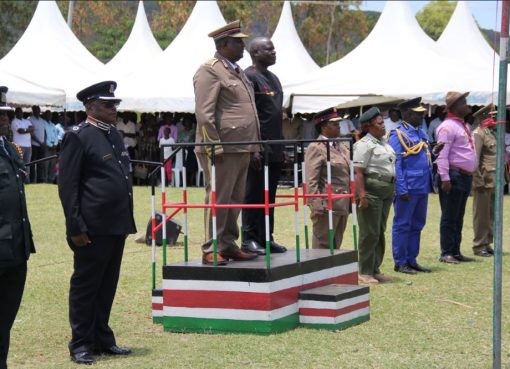Tucked away at Umoja Estate in Lanet Ward within Bahati Sub-County along the Nakuru – Nyandarua road, Nakuru School was awash with cultural lovers and tourists alike after it was transformed into an extravagant exhibition of cultural music, local dances and traditional foodstuffs.
Visitors were also treated to displays of traditional villages from East African communities with the aim of preserving and promoting the rich and diverse cultural values of the region’s tribes.
During the daylong event organized by the school’s administration, local residents and parents got a touch of the traditional way of life of ethnic communities with ‘villages’ complete with their tools of communication, hunting, storage facilities and traditional utensils.
Some of the communities on display included the Dinka from South Sudan, the Baganda from Uganda, the Kikuyu, Somali, Maasai, Kalenjin, Kamba, Luhya, Mijikenda, Luo, Teso, Embu, Kisii, among others.
To Clara Zeiner, a tourist from Germany, a group of students from Uganda stood out to her after they explained the outline of the Baganda King’s Court, the manner in which various huts in the palace were positioned, their significance and their occupants’ designations.
Ms Zeiner was among over 600 participants who graced the event and got to see traditional furniture, ornaments, musical instruments and ceremonial regalia from different ethnic communities.
The cultural festival also held an exhibition of traditional medicines as well as an elaborate exhibition of visual arts, plays, dramatized verse, acrobatics and stand-up comedy.
According to Nakuru School’s Director Ms Tabitha Waitindi, the Cultural day was aimed at celebrating Kenya’s achievements for the past 60 years and to sensitize the communities on the need to foster unity for development.
To Ms Waitindi, it was so much fun seeing all Kenyan cultures mingling freely while appreciating each other and knowing that they have so much to learn and share from their cultural differences.
She observed, “In the economic sense, the varieties of cultural expressions offer a new avenue for the growth and development of tourism products. Interesting facts demonstrating peaceful and cohesive living among the diverse Kenyan communities have been showcased here”.
Ms Waitindi expressed concern that Kenyan cultural heritage has been one of the most neglected and eroded over the years. Fewer of the 40-odd ethnic tribes, she added, retain traditions as modernity sweeps across the nation.
She pointed out it was ironic for African educational institutions to offer programmes in Chinese, French, Italian, Spanish and Arabic languages yet local dialects were threatened with extinction.
“Kenyans need to celebrate their rich cultural diversity in a manner that promotes unity, national cohesion and economic progression. The Government should incorporate cultural studies in the school curriculum from primary level all the way to tertiary institutions,” Ms Waitindi said.
A parent, Ms Grace Namunyak, expressed regret that some symbols of Kenyan culture like the kiondo or Maasai shuka have since been claimed and even patented by westerners, adding that this indicated that citizens had low regard for the country’s heritage.
“It is time we secured our cultural heritage from the pervasive nature of Western civilization. Let us protect what is good for posterity,” offered Ms Namunyak.
The school’s Principal Ms Velma Namachemo stated that Kenyans must think of children as participants in, and carriers of African culture, as they are a critical part of the population -the future of our societies.
Ms Namachemo noted that whilst culture shapes experiences and influences children’s development, cultural background gives them a sense of who they are.
“The unique cultural influences children respond to from birth, including customs and beliefs around food, artistic expression, language, and religion, affect the way they develop emotionally, socially, physically, and linguistically,” noted the Principal.
She indicated that culture is a powerful indicator of a child’s future well-being, and those who work with children, including social workers, and advocates of child rights, needed to understand the influences on child development and how they impact the way people grow and learn.
A teacher, Ms Felicia Olando, said during such events, friendships are built simply because one saw a dance style that was intriguing and asked to be taught or loved the traditional food prepared by people of community X considering they belong in community Y.
Ms Olando stated that “cultural events bring out a side of people that students will never see while sitting in that economics, mathematics or physics class”.
“Since our school has students from outside Kenya, all learners regardless of their ethnicity have come together and stand as one people. This is the Africa most of us want since we have already suffered enough losses due to tribalism. Once friendships are built at an early stage, it becomes very hard to break that bond,” Ms Olando observed.
She went on, “This unity then helps students to appreciate the beauty that is offered by other countries not as Kalenjins, Taitas but as Kenyans. Same goes for Tanzanians; they don’t appreciate Kenyans talents as the Gujirati or Hadza but as Tanzanians. Different communities from one area come together as one and show appreciation of another”.
By Anne Mwale and Dennis Rasto





